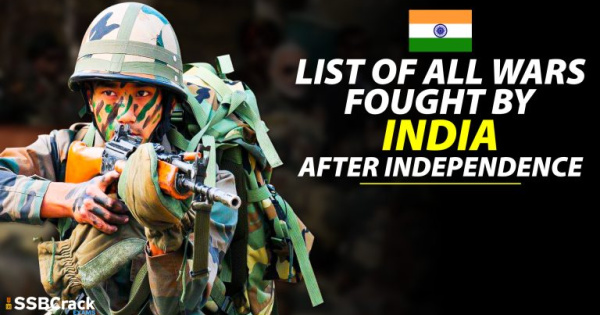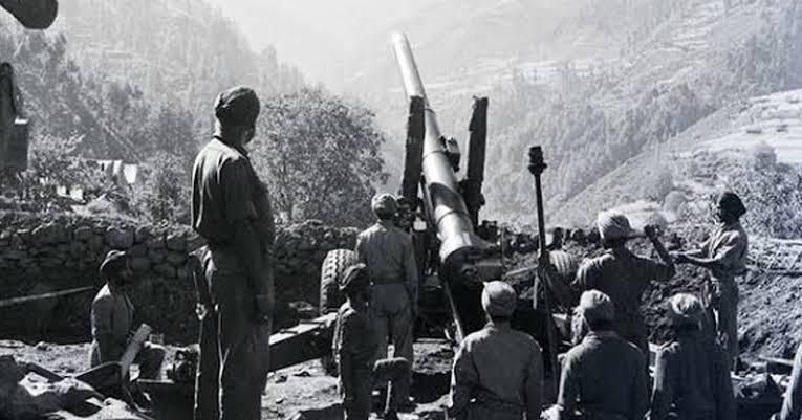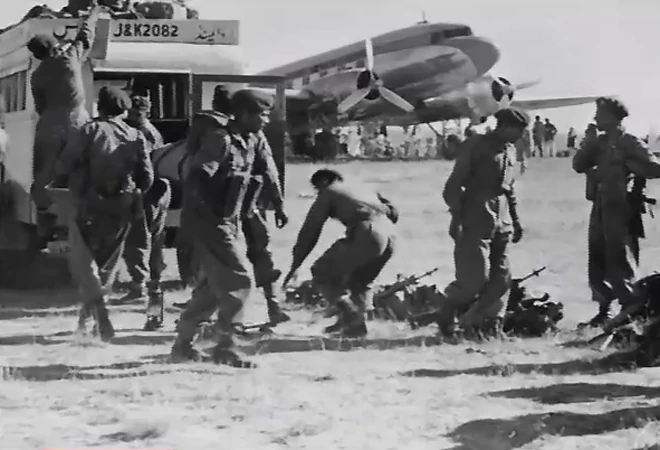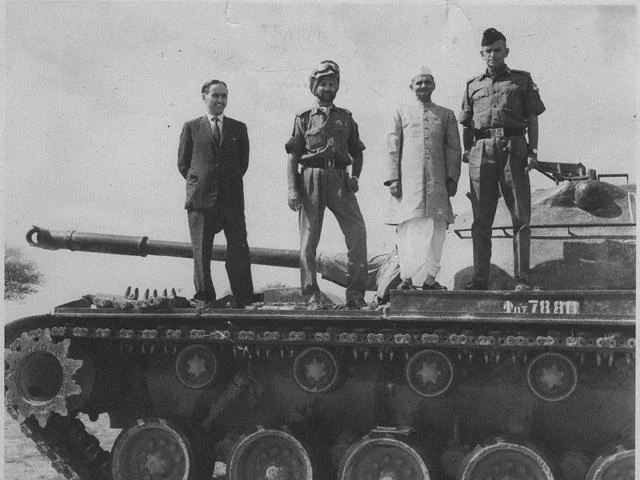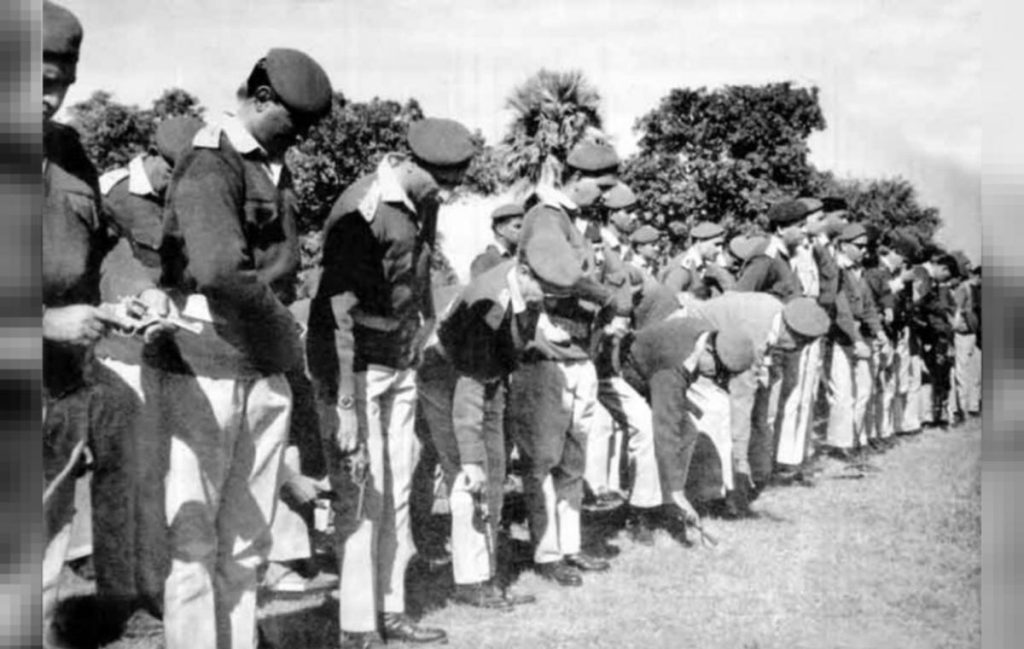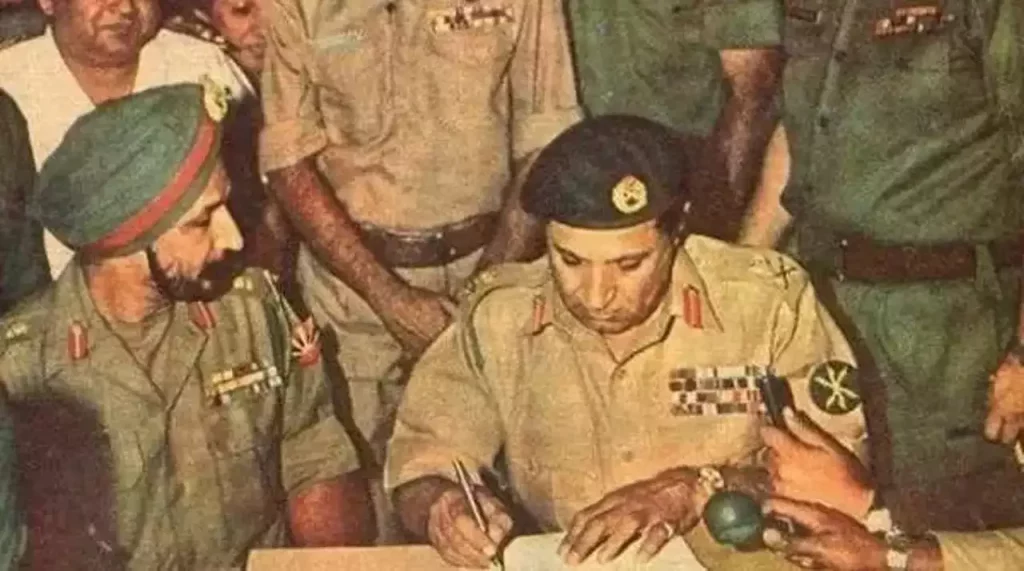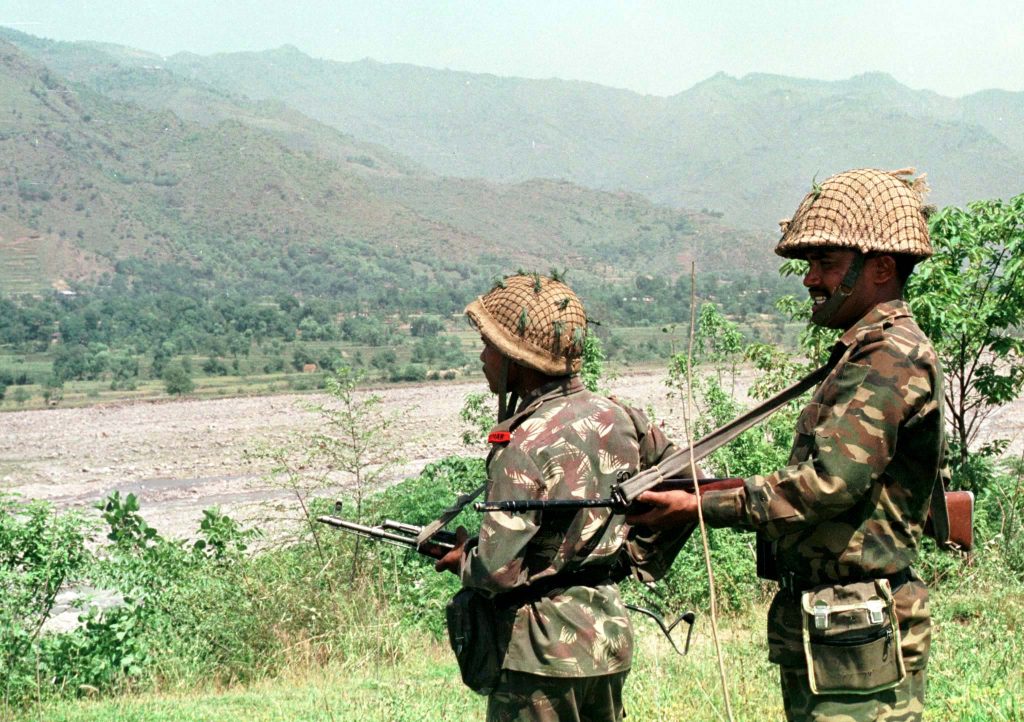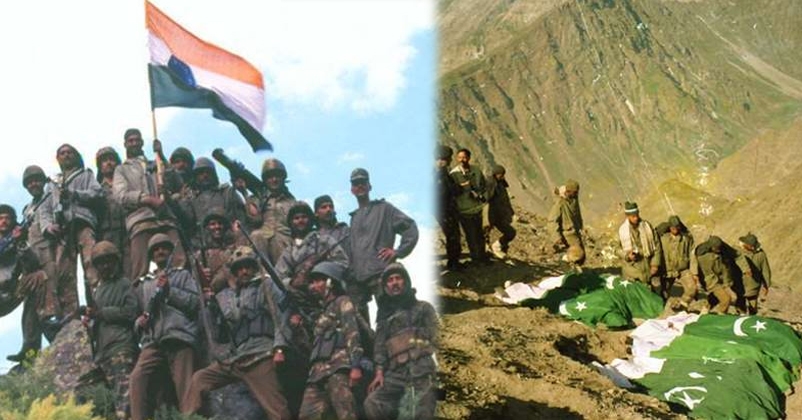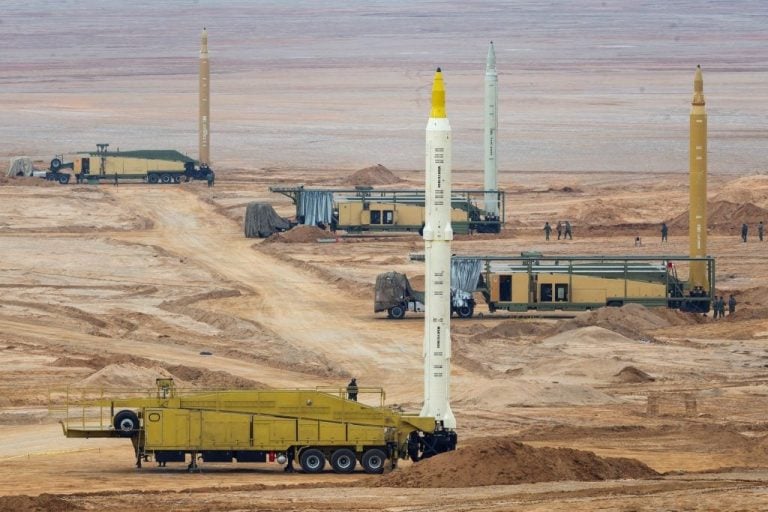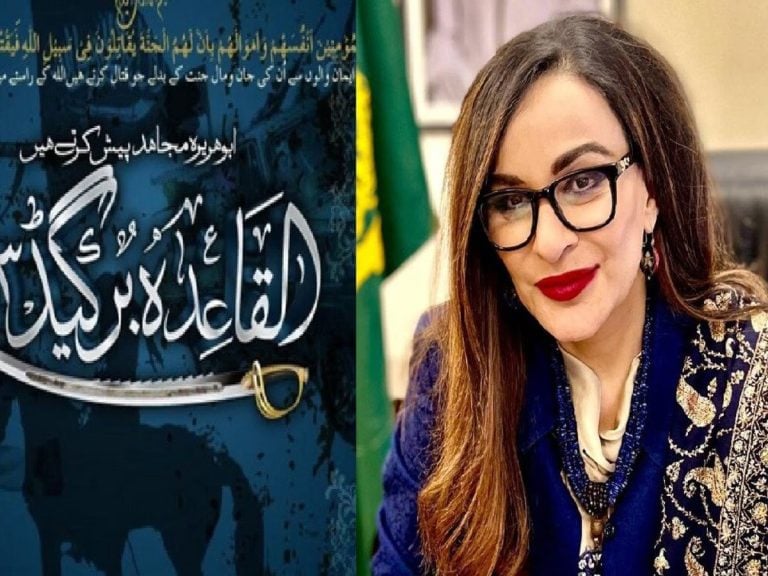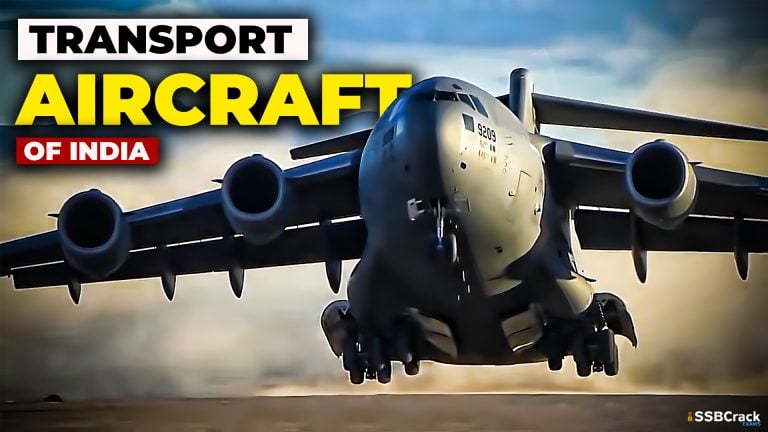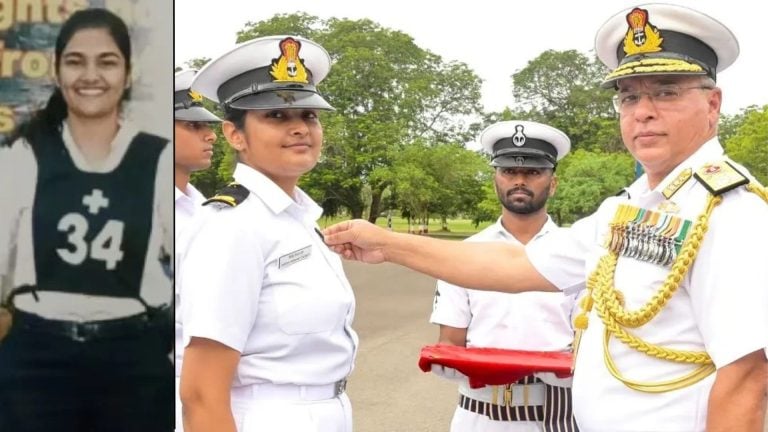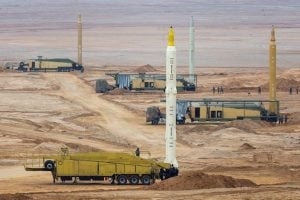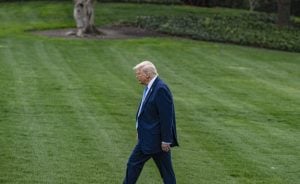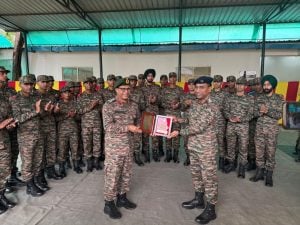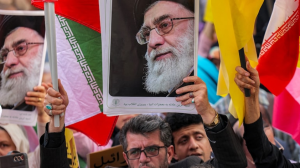Wars Fought by India: After Independence, there were numerous attempts to curtail the sovereignty of our nation as well as to lay claim to Indian territories. Most of these conflicts were against Pakistan, although China too has been involved in armed conflict. The fact that India emerged victorious in all these campaigns except the 1962 Indo-Sino war is a testament to the bravery and capability of the Indian armed forces.
List of All Wars Fought by India After Independence
This article presents the list of all the wars India fought after its Independence :
- The First Kashmir War of 1947 – 48
- The Sino – Indian War of 1962
- The Indo – Pak War of 1965
- The Sino – Indian War of 1967
- The Indo – Pak War of 1971
- The Kargil War of 1999
Wars Fought by India: The First Indo-Pak War of 1947-48
As a result of India and Pakistan’s territorial claims to Jammu and Kashmir. The 1947 Indian Independence Act – Any Princely State that was once a part of the British Raj has the option of remaining independent or joining one of India’s or Pakistan’s Dominions. Maharaja Hari Singh, a Hindu prince from the Dogra dynasty, reigned over the Muslim majority of Kashmir (3/5th).
Hari Singh opted to remain independent and apart from both India’s and Pakistan’s dominions until Pakistan invaded his region fiercely in an attempt to take it. He requested India’s assistance since he was unable to retaliate. Nehru stated unequivocally that Indian forces would only fight the war if Kashmir was proclaimed an Indian province.
On October 2, 1948, the Maharaja made his final decision to join India in order to preserve his people. On that day, a “Document of Accession” was signed, formally transferring all of Kashmir to India, subject to a few restrictions imposed by Hari Singh. Nehru and his cabinet intended for special Articles to be preserved under the Indian Constitution, and for Kashmir to be constituted as a State of India with Autonomous Status, in order to respect the King’s views.
From October 1947 until December 1948, the conflict was waged (1 year and 2 months).
On January 1, 1949, the United Nations Security Council passed a ceasefire resolution, ending the war. The ceasefire established the “ceasefire line” that divides Kashmir into Indian and Pakistani-controlled sectors.
Wars Fought by India: The Indo-China War of 1962
The controversy dates back to the “McMahon Line” being drawn. The Simla Convention, which took place at Simla from 1913 to 1914 and was attended by Britain (represented by Sir Henry McMahon), China, and Tibet, established this boundary.
The McMahon Line is not recognized by China since the Chinese Kuomintang government, which was in power at the time, did not sign the treaty; nonetheless, India believes it to be the boundary. As a result, the Indian state of Arunachal Pradesh (with an area of 83,743 km2) and China’s Aksai Chin (with an area of 37,555 km2) in northeastern Kashmir have become disputed territory.
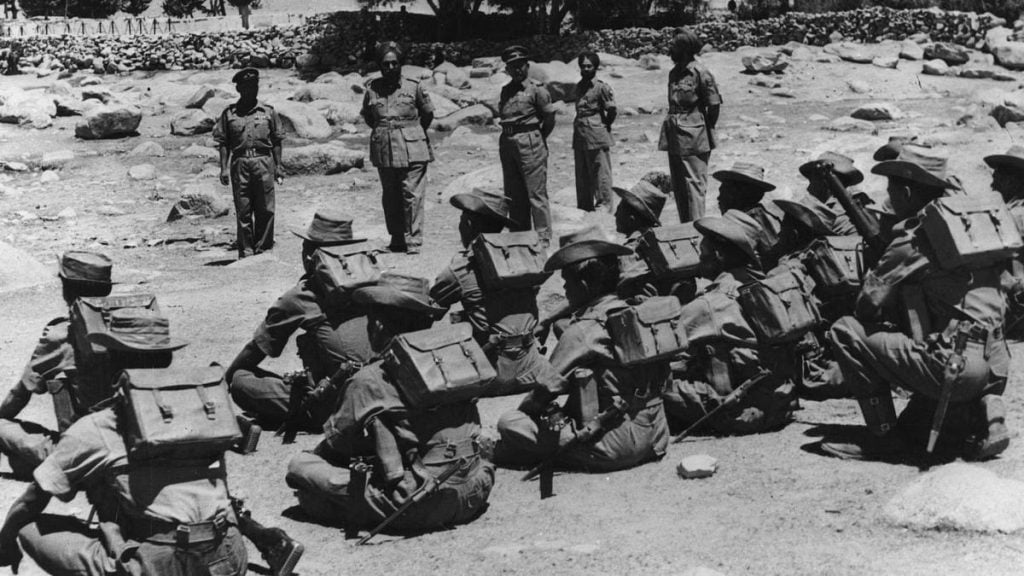
The McMahon Line is reported to have enlarged British India’s territory in this area (now AP State) northward and pushed its border out 60 miles (100 kilometres) towards Tibet. Tawang became part of British India as a result of this expansion. In addition, the Trans-Karakoram Tract (5,800 km2) in northern Kashmir is a contested territory between India and China.
In other words, Pakistan handed authority of this territory to China by the Sino-Pakistan Agreement of March 2, 1963, under the proviso that the transfer would only be effective until the Kashmir conflict was resolved. On the same day, India registered complaints with both governments, claiming the area as Indian territory.
The Indo-China War lasted from October 20 to November 21, 1962.
Wars Fought by India: The Second Indo-Pak War of 1965
From April 8 to September 23, 1965, this conflict was fought (5 months and 15 days).
Although the UN’s strong pleas for a ceasefire (in the form of resolutions) brought the military confrontations between India and Pakistan to a halt, no measures were done to ensure a feeling of long-term peace. The Soviet Union acted as a mediator at the time.
TASHKENT AGREEMENT CAME AS A RESULT OF THIS WAR.
An India-Pakistan summit conference was conducted in Tashkent (the current capital of Uzbekistan) in the southern portion of the Soviet Union on January 4, 1966, after more obstacles. Premier Kosygin served as the mediator between Prime Minister Lal Bahadur Shastri of India and President Ayub Khan of Pakistan. The summit ended on January 10 with the adoption of the Tashkent Declaration on January 11.
The leaders resolved, among other things, to settle problems between the two nations amicably and without resorting to force in line with the United Nations Charter. Withdraw the armed troops of the two nations to the positions they had at the commencement of the conflict on August 5, 1965, no later than February 25, 1966; and Hold talks between the two governments to resolve the disagreements.
Wars Fought by India: The Third Indo-Pak War of 1971
Fought from the 3rd of December to the 16th of December in 1971, (14 days). It is also known as the Bangladesh Liberation War. Prime Minister Indira Gandhi was considering expelling Pakistan’s army and air force from southern Azad Kashmir and freeing the region. To deter India from attacking West Pakistan, the US dispatched the Seventh Fleet to the Bay of Bengal.
According to international accounts, the conflict began with Operation Genghis Khan on December 3, 1971, when Pakistan conducted pre-emptive air strikes on 11 Indian airbases. Pakistan signed a “Document of Surrender” on December 16, 1971, making 93000 Paki soldiers prisoners of war. Mukti Vahini, together with India’s military forces, defeated Pakistan.
As part of Operation Python and Operation Trident, India effectively destroyed much of Karachi’s base, as well as the PNS Ghazni, PNS Khyber, PNS Muhafiz, PNS Shah Jahan, and seven gunboats. Along with some frigates, destroyers, and submarines, the INS Vikrant played a key part in the conflict. The Indian Air Force quickly gained control of Dhaka after destroying a Pakistani air base. The Pakistani military was further humiliated when India only released 90,000 (POWs) after the Simla Agreement was negotiated and signed on July 2, 1972.
Half of Pakistan’s navy, a quarter of its air force, and a third of its army were destroyed. Both China and the United States backed Pakistan politically and financially, while our old partner, the Soviet Union, publicly backed India and rejected the United States UNSC resolution calling for a cease-fire between India and Pakistan.
Wars Fought by India: The Fourth Indo-Pak War of 1999 / Kargil War
Militant infiltrations were first discovered in Kargil. Due to the harsh weather conditions, it was usual practice for Indian and Pakistani forces to leave forward stations during this period. In the spring, the same positions would be filled again. In a move to retake Kashmir this spring, the Pakistan Army took Indian installations as well.
As a reaction to Pakistan’s Operation Badr, the Army launched Operation Vijay. Operation Safed Sagar was initiated by the Indian Air Force to assist the ground forces. In the history of the Indian Armed Forces, this conflict saw the first large-scale deployment of air power. Our Army recruited 2,00,000 Indian troops and several thousand from India’s paramilitary forces, as planned by several commanders led by Army Chief General Ved Prakash Malik.
Intruders were discovered to be firmly entrenched, and artillery strikes had only limited effects. The Air Force was required in remote places. On May 30, 1999, the IAF’s No. 7 Squadron deployed Mirage 2000 aircraft. No. 7 Squadron of the Indian Air Force flew for three days and killed infiltrators at Muntho Dhalo, Tiger Hill, Points 4388 and 5140.
The enemy’s logistical and resupply capabilities in the Batalik sector were damaged by these attacks. Tiger Hill was well-defended and guarded by the IAF. The Israelis sent the Indian military 100 laser-guided bomb kits, which the Air Force opted to deploy to retaliate against the Pakistani bunkers. Aircraft flew to a height of 10,000 feet above ground level, well outside the range of MANPADS (man-portable air-defence systems), resulting in greater bomb drop accuracy.
11 July 1999: Indian soldiers retake critical Batalik positions. Prime Minister Atal Bihari Vajpayee calls Operation Vijay and Safed Sagar a success on July 14, 1999. The Indian administration has outlined the parameters for negotiations with Pakistan. The Kargil conflict officially ended on July 26, 1999. Pakistani regular and irregular forces would be completely withdrawn from India, according to the Indian Army.
Also Read: Top Military Operations Conducted By Indian Armed Forces
Wars Fought by India: Conclusion
The history of our post-independence armed conflicts is the key to devising our future geo-political scenario. Both Pakistan and China would more likely be our opponents in future wars. India has to constantly upgrade its arsenal and modernise itself to cope with the challenges posed by our neighbours. What is more alarming, is the fact that Pakistan and China have built a very deep relationship over the years that extends beyond diplomacy to military and infrastructure cooperation. It is therefore safe to posit that in the future India might have to wage a war on two fronts simultaneously.
To crack the SSB Interview, You can join our SSB interview live classes batch and we recommend you to Enroll SSB INTERVIEW ONLINE COURSE. Trusted by thousands of defence aspirants.


